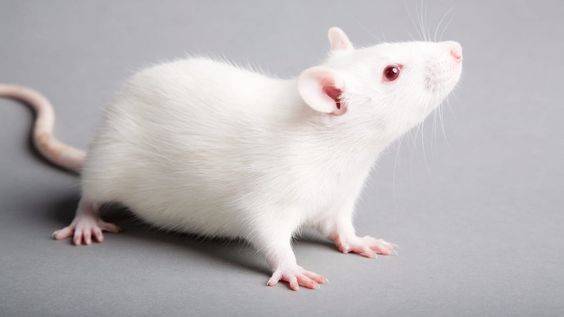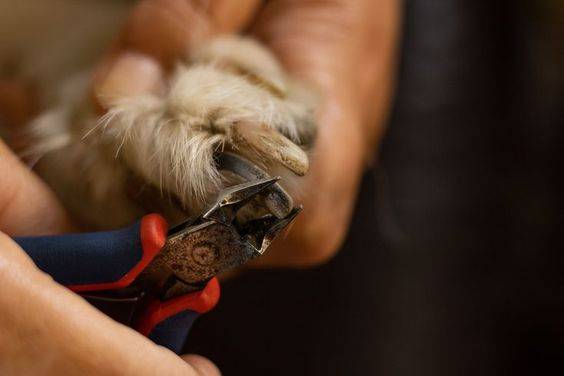Rats have long been misunderstood creatures, often associated with negative stereotypes. However, these intelligent and affectionate animals are becoming increasingly popular as pets. With their playful personalities and social nature, pet rats can make wonderful companions. If you’re considering adding a pet rat to your family, it’s important to understand the different breeds and their unique characteristics. This guide will help you navigate through the various types of pet rats, ensuring you find the perfect match for your home.

Understanding Pet Rat Breeds
Rats belong to the species Rattus norvegicus, commonly known as the brown rat or Norway rat. Within this species, there are several different pet rat breeds and varieties, each with its own distinct features. Pet rats are typically bred for their temperament, coat type, and color, making them a diverse and fascinating group of pets.
Popular Pet Rat Breeds
1. Standard Rat
The standard rat, also known as the “fancy rat,” is the most common type of pet rat breeds. They have smooth coats and come in a wide range of colors and markings. Standard rats are known for their friendly and curious nature, making them ideal for first-time rat owners. They are highly social and enjoy interacting with their human caregivers.
2. Dumbo Rat
Dumbo rats are easily recognizable by their large, round ears that are set lower on their heads compared to standard rats. This breed is named after the Disney character Dumbo, the elephant, due to their distinctive ear shape. Dumbo rats are known for their gentle and calm demeanor, making them excellent pets for families with children. Their laid-back personality makes them easy to handle and bond with.
3. Rex Rat
Rex rats have curly or wavy fur and whiskers, giving them a unique and endearing appearance. Their coats can be short or long, and they come in various colors and patterns. They engage in interactive play with their owners.
4. Hairless Rat
As the name suggests they have soft, smooth skin that can be pink, black, or spotted. Hairless rats are known for their affectionate and outgoing personalities. They enjoy being held and cuddled, making them great lap pets. However, their lack of fur requires extra care to keep them warm and protected from skin injuries.
5. Satin Rat
Satin rats have a glossy, shiny coat that reflects light, giving them a satin-like appearance. Their fur is finer and silkier than that of standard rats. Satin rats are known for their sweet and friendly nature. They enjoy socializing with their human companions and are relatively easy to train. Their striking appearance makes them a popular choice among rat enthusiasts.
6. Bristle Coat Rat
Bristle coat rats, also known as “Double Rex” rats, have a unique coat that is a combination of smooth and curly fur. This results in patches of hairlessness interspersed with fur, giving them a somewhat scruffy appearance. Bristle coat rats are known for their playful and curious behavior. They enjoy climbing and exploring, making them entertaining pets to watch and interact with.
Choosing the Right Rat Breed
When selecting pet rat breeds, it’s important to consider your lifestyle and preferences. Different breeds have varying care requirements and personalities, so finding the right match is crucial for a harmonious relationship.
Temperament: Consider the rat’s personality. Some breeds, like the Dumbo rat, are known for their calm and gentle nature, making them suitable for families with children. Other breeds, like the Rex rat, are more energetic and playful.
Grooming Needs: Certain pet rat breeds, such as Rex and Satin rats, require regular grooming to maintain their coats. Hairless rats need extra care to protect their skin. Be prepared for the grooming commitment that comes with your chosen breed.
Health Considerations: Some breeds may be prone to specific health issues. Hairless rats, for example, can be more susceptible to skin problems and need a warmer environment. Research the breed’s potential health concerns and ensure you can provide the necessary care.
Socialization: All rats are social animals that thrive on interaction with their owners and other rats. Consider whether you have the time and resources to keep multiple rats, as they are happiest in pairs or small groups.
Aesthetic Preferences: While appearance should not be the sole factor in your decision, it’s natural to be drawn to certain coat types and colors. Choose a breed that you find visually appealing and that you will enjoy caring for.
Caring for Your Pet Rat
Regardless of the breed you choose, proper care is essential for keeping your pet rat healthy and happy.
Housing
Provide a spacious cage with multiple levels, as rats love to climb and explore. Wire cages with solid bottoms are ideal, as they allow for proper ventilation and are easy to clean. Line the cage with safe bedding, such as paper-based products, and avoid cedar or pine shavings, which can be harmful to rats’ respiratory systems.
Diet
Offer high-quality commercial rat food as the main component of their diet. Supplement with fresh fruits, vegetables, and occasional treats like cooked eggs or lean meats.
Socialization and Enrichment
Spend time interacting with your rat daily, providing toys, tunnels, and climbing structures to keep them engaged. Rats also enjoy puzzle feeders and foraging activities that challenge their minds.
Health Care
Regular veterinary check-ups are important to monitor your rat’s health. Be on the lookout for signs of illness, such as changes in appetite, weight loss, or respiratory issues. Early detection and treatment of health problems can significantly improve your rat’s quality of life.
Building a Bond with Your Rat
Creating a strong bond with your pet rat breeds takes time and patience.
Start Slowly: Allow your rat to acclimate to their new environment before handling them. Gradually introduce yourself by offering treats and speaking softly to them.
Gentle Handling: When picking up your rat, use a gentle and secure grip. Support their body and avoid squeezing. Rats appreciate being held close to your body for warmth and security.
Positive Reinforcement: Use treats and praise to reward your rat for positive behaviors. This will help them associate you with positive experiences and build trust.
Playtime: Engage in interactive play with your rat. Use toys, tunnels, and climbing structures to create an enriching environment. Rats enjoy games that challenge their intelligence, such as hiding treats for them to find.
Consistency: Spend time with your rat daily to reinforce your bond. Consistent interaction helps your rat feel secure and strengthens your relationship.
Inference
Choosing the right pet rat breeds involves understanding the unique characteristics and care requirements of each type. Whether you prefer the friendly standard rat, the gentle Dumbo rat, or the playful Rex rat, there’s a breed that will suit your lifestyle and preferences. Proper care, socialization, and bonding are key to ensuring a happy and healthy life for your pet rat breeds. By providing a loving and enriching environment, you’ll enjoy a rewarding and fulfilling relationship with your furry friend.
Pet rats are truly remarkable animals that bring joy and companionship to their owners. With their intelligence, affectionate nature, and diverse pet rat breeds, there’s no doubt that pet rats make wonderful additions to any household. Whether you’re a seasoned rat enthusiast or a first-time owner, understanding the different breeds and their needs will help you make an informed decision and provide the best care for your new pet. So, take the plunge and discover the delightful world of pet rats—you won’t be disappointed!







